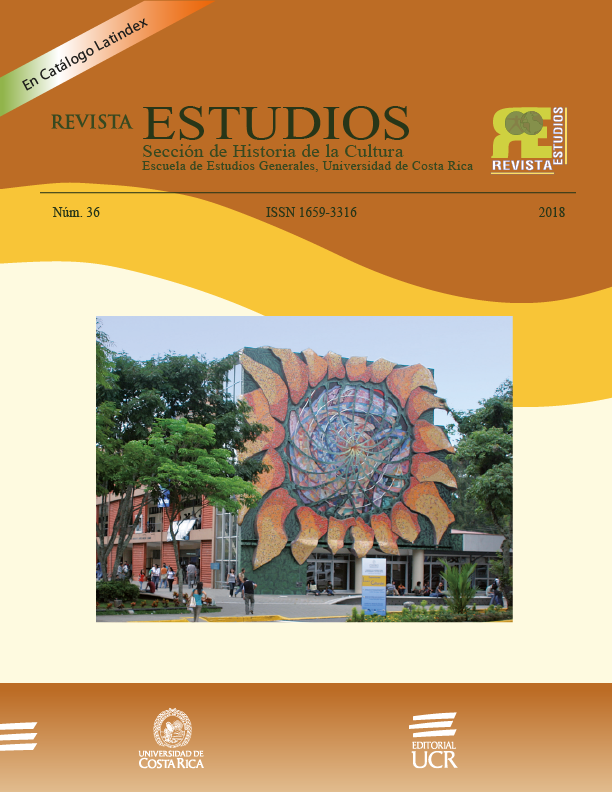Abstract
This paper outlines the possibilities of using QR codes for both learning and teaching Art History in primary education. The Project Based Learning was used. This approach fulfills three purpose regarding students: they gained scientific knowledge, they put on practice collaborative learning and they integrate technology. The study was carried out on a sample of 24 primary school students, aging between 10 and 11. Initial and final questionnaires and a rubric to check behavior were used to assess the learning progress. The results were highly satisfactory regarding the improvement of Art knowledge, the successful collaborative work among peers and the profuse use of technology. Students improved, both quantitatively and qualitatively, their conceptual, procedural and attitudinal knowledge.
References
Ambrós, A. y Breu, R. (2011). Educar en medios de comunicación. La educación mediática. Barcelona: Graó.
Bardin, L. (1996). Análisis de contenido. Madrid: Ediciones Akal.
Bayonet Robles, L. E. (2010). Aprendizaje móvil aplicado en la educación. Usos prácticos. Working Paper on-line, Universidad Autónoma de México. Retrieved from http://reposital.cuaed.unam.mx:8080/jspui/handle/123456789/1209
Brown, T.H. (2006). Beyond constructivism: navigationism in the knowledge era. On the Horizon, 14, 108-120.
Cubillo Arribas, J., Martín Gutiérrez, S., Castro Gil, M. A., & Colmenar Santos, A. (2014). Recursos digitales autónomos mediante realidad aumentada. Retrieved from http://revistas.uned.es/index.php/ried/article/view/12686/11880
De Miguel González, R. y Buzo Sánchez,I. (2015). Aprender Geografía con la Web 2.0 a través de la evolución de los paisajes agrarios de España. Retrieved from http://eprints.ucm.es/28547/1/PIMCD_98_2014_ver6.pdf
Espinosa, C. P. (2015). Realidad aumentada y educación: análisis de experienciasprácticas. Pixel-Bit. Revista de Medios y Educación, 46, 187-203.
Fonseca, D., Navarro, I. & Puig, J. (2011). Códigos QR aplicados a la visualización de elementos arquitectónicos.XV Congreso de la Sociedad Iberoamericana de Gráfica Digital SIGRADI16, 548-551.
Johnson, D. W. & R. Johnson. (1994a). Joining Together: Group Theory and Group Skills, (5á ed.), Needham Heights, Massachusetts: Allyn & Bacon.
Johnson, D. W., & Johnson, R. T. (1994b). Structuring Academy Controversy. In S. Sharan ,Ed. Handbook of Cooperative Learning Methods, 66-81. Westport, CT: Praeger Publishers.
Koehler, M. J., & Mishra, P. (2009). What is technological pedagogical content knowledge?. Contemporary Issues in Technology and Teacher Education, 9, 1. Retrieved from http://www.citejournal.org/vol9/iss1/general/article1.cfm
Llanos Vaca, L. (2013). Repercusión y análisis de las nuevas tecnologías en el entorno educativo del siglo XXI.Doctoral dissertation, e_telecomunicacion. Retrieved from http://oa.upm.es/21606/
Mishra, P., Koehler, M. J. & Kereluik, K. (2009). The song remains the same: Looking back to the future of educational technology. Techtrends, 53,5, 48-53.
Mishra, P.; Koehler, M. J. (2006). Technological Pedagogical Content Knowledge: A new framework for teacher knowledge. Teachers College Record, 108,6, 1017-1054.
Moreno Vera, J. R., & López Vera, M. I. (2013). Proyecto de investigación educativa: la Historia del arte a través de códigos QR. Retrieved from https://web.ua.es/es/ice/jornadas-redes/documentos/2013-comunicaciones-orales/332910.pdf
Moreno-Vera, J.R., López-Vera, M. I., Vera-Muñoz, M. I. (2014). Development of Creative and Educational Thinking in Arts Training Teachers: QR Codes. Sylwan Journal, 158, 12, 185-200.
Prats, J. (2001). Enseñar historia. Notas para una didáctica renovadora. Mérida: Artes Gráficas REJAS.
Prensky, M. (2001). Digital natives, digital immigrants. On the Horizon 9, 5, 1-6. Retrieved from http://www.webcitation.org/5eBDYI5Uw
Ramsden, A. (2008). The use of QR codesin education: a getting started guide for academics. Working paper on line, University of Bath. Retrieved from http://opus.bath.ac.uk/11408/
Rikala, J. & Kankaanranta, M. (2012). The Use of Quick Response Codes in the Classroom. CEUR Workshop Proceedings. Retrieved from http://ceur-ws.org/Vol-955/papers/paper_40.pdf
Rikala, J, Kankaanranta, M. (2013). Actual and potential pedagogical use of tablets in schools. Human Technology: An Interdisciplinary Journal on Humans in ICT Environments,9, 2, 113-131.
Román-Graván, P., & Martín-Gutiérrez, Á. (2013). La formación de docentes en estrategias innovadoras de enseñanza y aprendizaje: los códigos de respuesta rápida o códigos QR. Didáctica, innovación y multimedia, 26, 0001-14.
Sánchez Terrell, S. (2011). Effective Mobile Learning. 50+ Quick Tips & Resouces. Retrieved from https://es.scribd.com/doc/67369598/Effective-Mobile-Learning-50-Tips-Resources-Ebook
Vera, M. I.; Soriano, M. C. y Seva, F. (2011). La competencia tecnológica del profesorado de Ciencias Sociales en la enseñanza secundaria. En Miralles,P.; Molina, S. y Santisteban, A. Coords. La evaluación en el proceso de enseñanza y aprendizaje de las Ciencias Sociales, 2, 463-475.
Vila Rosas, J. (2011). Los códigos QR aplicados a la educación. Primeras Noticias: Comunicación y Pedagogía,253, 27-29.
Walters, L. S. (2000). Four Leading Models. Harvard Education Letter’s Research Online. Retrieved from http://www.edletter.org/past/issues/2000-mj/models.shtml
Wang, M., Shen, R., Novak, D. & Pan, X. (2009). The impact of mobile learning on students' learning behaviours and performance: Report from a large blended classroom. British Journal of Educational Technology, 40, 673–695

